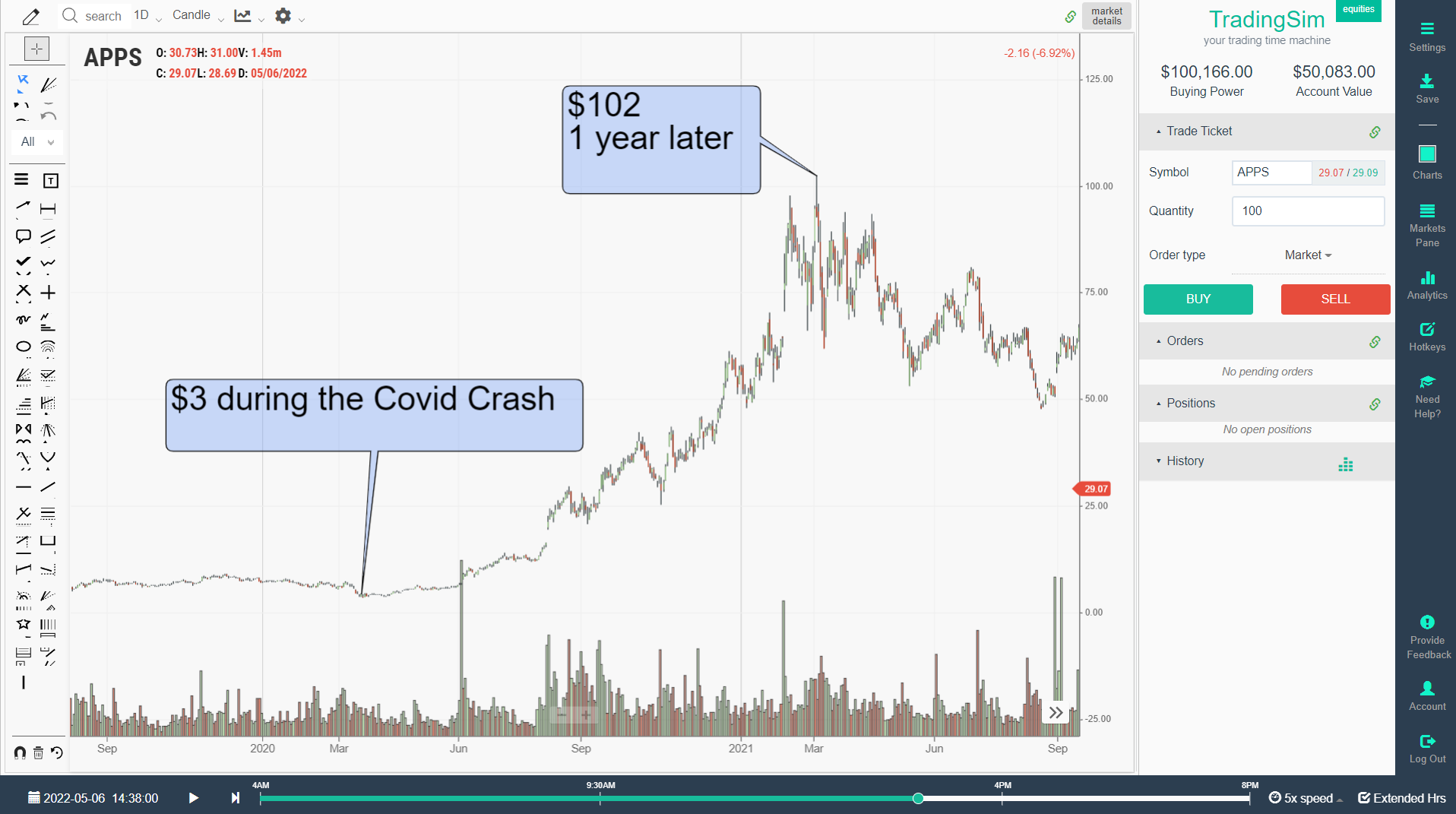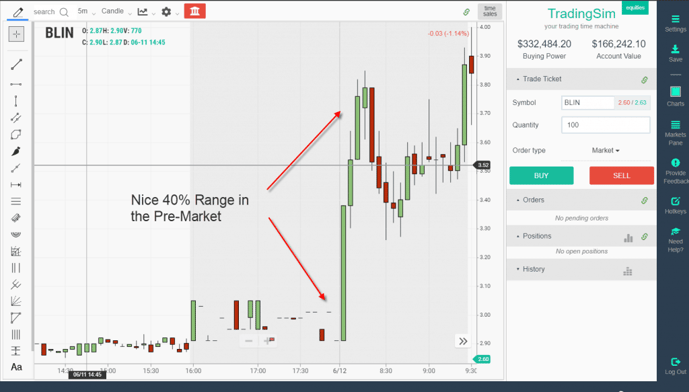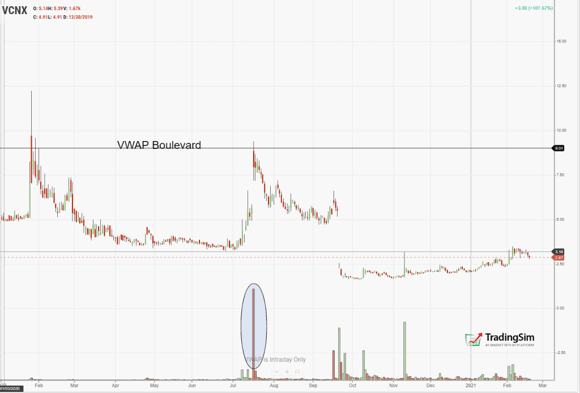What are Penny Stocks?
Penny stocks refer to small companies that usually trade at low prices in the stock market, from a few pennies to $5 per share. Most penny stocks trade on over-the-counter exchanges, although a few also trade on large stock exchanges, such as the Nasdaq and the New York Stock Exchange. These stocks are generally associated with new companies with minimal cash inflows if any.
Because penny stock companies fail to meet the minimum requirements for listing on large stock exchanges, their stocks are mostly listed on the unregulated over-the-counter (OTC) markets. Also, these stocks trade infrequently and have low liquidity, so sellers might find it hard to sell their holdings due to fewer buyers of these stocks. The illiquid nature of these stocks could also create problems for traders in the shape of larger spreads and volatile prices.
Additionally, companies associated with penny stocks release little and scant information about their operations, which makes it difficult for value investors to analyze these companies before investing in them.
Which Stocks are Penny stocks?
There are plenty of companies whose stocks fall under the category of penny stocks. While most of these stocks trade on the over-the-counter market, there are many mid-cap stocks priced below $5 but trade on leading stock exchanges like Nasdaq and the New York Stock Exchange. Here are some mid-cap penny stocks listed on main exchanges, with market capitalizations between $2 billion and $10 billion at the time of writing:
| Ticker |
Company |
Market Capitalization |
Price Per Share |
Exchange |
| AUR |
Aurora Innovation. Inc. |
$5.04 billion |
$4.26 |
NASDAQ |
| TLRY |
Tilray Brand. Inc. |
$2.34 billion |
$4.74 |
NASDAQ |
| ANGI |
Angi Inc. |
$2.17 billion |
$4.11 |
NASDAQ |
| UWMC |
UWM Holdings Corporation |
$5.74 billion |
$3.62 |
NYSE |
| DNA |
Ginkgo Bioworks |
$4.34 billion |
$2.71 |
NYSE |
Are Penny Stocks Worth It?
Penny stocks are cheap, which makes them attractive to many undercapitalized investors. In comparison, blue-chip or other well-known stocks can be very costly. It's for this reason that penny stocks appear as bargains. But are they really bargains? Are they really worth it?
Here are some important factors that can help you determine whether penny stocks are worth investing in.
Although you can indeed earn decent returns by investing in new companies during their early stages, investing in them can be equally risky. These companies typically have doubtful business models, zero to low revenues, uneven cash inflows, insufficient capital, and many other operational and financial challenges. With that said, many successful companies of today were once small companies with modest beginnings.
So, value investors have an opportunity to find capable and undervalued companies that can grow into large, profitable businesses and generate hefty returns for their shareholders.
However, before investing in a penny stock company, you should thoroughly analyze its financial statements and business model to get an idea about its future cash flows and revenue-generating potential. At the end of the day, we recommend a healthy dose of skepticism -- do your due diligence!
Are Penny Stocks Good for Beginners?
Beginners are often attracted to penny stocks because they can buy plenty of shares at cheap prices. However, merely being low-priced doesn't mean that a stock is cheap or undervalued compared to its true value. Penny stocks are worth pennies for a reason, and you must be aware of the risks associated with investing in them.
Investing experts advise that beginners should invest in stocks of blue-chip or well-established companies as they trade on secure stock exchanges, are stable, and can provide you with dividend income. In contrast, penny stocks trade on unregulated exchanges, are highly volatile, and don't provide you with any dividend income.
Because of the lack of liquidity in various penny stocks, they can experience wild moves as different market participants can easily manipulate such stocks in their favor. This is often at the expense of other novice investors. As a beginner investor, you would be better off if you stay away from investing in penny stocks and, instead, invest in better-known stocks with a proven track record.
Can You Get Rich Off Penny Stocks?
Despite the fact that investing in penny stocks is risky, you can still make a good amount of money trading them. However, you need to have excellent financial analysis skills to analyze the financial statements of hundreds of companies to find the best penny stocks among them.
Investing gurus like Warren Buffet, Charlie Munger, and Peter Lynch call themselves value investors because they thoroughly analyze different stocks to find undervalued stocks for investment purposes. You can make a fortune for yourself if you find a penny stock that has the potential for registering explosive growth in revenue as well as stock price.
Take the symbol APPS for an example. Digital Turbine Media is the company behind the symbol. They experienced exponential growth in the past few years and grew from a penny stock to over $100 in just one year!

This is just one example, but the proof of APPS success was in its business model and earnings growth.
Another way that many gurus claim will make you rich with penny stocks is by having a sound trading strategy versus an "investing" strategy. As we have already mentioned, most penny stocks are manipulated. There is a reason they are on the stock market -- to raise money. If you aren't aware that the majority of penny stocks are more or less "pump and dump" stocks, then you are naive.
To get rich off of penny stocks, you'll need a sound strategy that likely employs some sort of shorting tactics as these "worthless" companies often return to the low prices they started from. Not only that, but you'll need sound risk management as these stocks are VERY risky. Many active traders take advantage of the "pump" that these stocks and market makers employ, in order to short them on the "dump."
Be sure to study the concept of dilution if you want to learn more.
How to Buy Penny Stocks?
Buying penny stocks is rather simple. However, the trick of the trade is to find out the right penny stock that can give you a decent return on your investment, or a good return on your active trade. Here is how you can buy penny stocks:
1. Open a brokerage account
To buy stocks of any kind, you need to open a brokerage account with a stock broker. You can find plenty of stock brokers in the stock market, but you should select the one that offers the best trading services, such as access to an advanced trading terminal, low fees, short locates, spreads, and commissions.
While trading penny stocks, you should choose a broker that does not charge surcharges and doesn't have any volume restrictions, such as trading more than a certain number of shares. Make sure you have access to hard-to-borrow stocks if you plan to short these stocks.
2. Research and analyze different stocks
You need to conduct your own research and not rely on 'hot penny stocks' that you read about on different websites, Twitter, and alert service. You can log in to the company's website, read financial reports, management discussion on financial statements, and any other relevant material regarding the company's operations. If you don't find the latest information on the company's website, it could be a matter of concern and should be a good enough reason to disband your plan of buying its shares.
Similarly, you should check the history of the company's dilution habits and whether or not they have any forms filed with the SEC. In addition, you should check for institutional ownership. The more funds buying this stock, the better.
If you find out that a company has a decent financial standing, has a solid business model with strong revenue and growth prospects, you can consider investing in it for the long term. Such companies can realize their true potential in the long run, and the shareholders can earn high returns on their investments if they adopt a buy-and-hold investment approach.
That being said, in today's world of investing, social sentiment can also be a good indicator of a penny stock increasing in value. Pump and dump schemes abound on the web, but if momentum is behind a penny stock, it could be a worthwhile short-term swing trade if you understand your risks.
3. Create a diversified portfolio
Penny stocks are volatile and are high-risk investments, it makes sense to create a diversified portfolio of investments with a small portion of it consisting of penny stocks. However, even the smaller portion of your portfolio should be chosen only after conducting thorough research.
4. Check for scams
Penny stocks are notorious for various deceitful practices. The two most notable and common ones include the 'pump and dump' scam and the 'short and distort' scam.
The 'pump and dump' scam includes promoting a penny stock by publishing fake positive news stories about the company's operations and its products or services. Artificial hype is created to encourage novice investors to buy these stocks, which pushes the prices up. Scammers who have already bought the stock at lower prices then offload their holdings at higher prices after prices spike due to increased demand following the 'pump.' Shortly after that, the prices plummet, leaving the duped buyers in deep losses.
The 'short and distort' scam works similarly;y to the 'pump and dump' scam, except that the former involves scammers promoting negative news about a stock, which prompts fearful investors to offload their stocks. The scammers holding short positions in the stock benefit from falling prices. However, this comes at the expense of novice investors who sell their holdings at a loss when prices start plummeting due to high selling pressure.
How to Find the Best Penny Stocks to Buy?
You can use different methods to find the best penny stocks. For example, you can use a stock screener tool to filter stocks based on your selection criteria. You can filter penny stocks by finding stocks priced below $5. You also have the option to search stocks based on the stock exchange, market capitalization, index, country, volume, and many other attributes. Alternatively, you can search for stocks on an over-the-counter market website.
We recommend to scan for penny stocks with higher average volume. You might also scan for penny stocks that are beginning a new uptrend. This will ensure that you have some sort of technical wind behind your back.
After filtering out the stocks, you need to go to the company's website and analyze its latest financial statements to find out the important information about its business. You should study whatever information is available on the website to make an informed investment decision regarding company dilution or other practices.
One of the best ways to analyze a stock's fundamentals and risk for dilution is through the SEC's EDGAR site, or pay for a quality service like DilutionTracker.com, which does all the hard work for you.
The Best Penny Stock Patterns
Just because penny stocks are less comparable to larger cap stocks, they still move in predictable patterns. Just like every other asset class, traders rely on price charts to trade them. Like other famous stocks, penny stocks can also be traded profitably if you know some basic stock patterns as technical analysis works equally well for penny stocks and high-ticket stocks.
Here are a few examples of the patterns we like to employ when trading penny stocks. For a more detailed post on these two patterns, visit our free resource here.
1. Pre-Market Rise Pattern
Trading penny stocks requires a good understanding of momentum, volume, liquidity, and support and resistance. This can be very tricky to trade, and it isn't for the faint of heart. For every penny stock that makes exponential gains in the pre-market session, another will likely fail at the same pace.
For the pre-market rise pattern, you simply look for momentum and extreme relative volume for the stock in play. Wait for a solid base to form, and then enter for the second leg once you have risk levels set. Just keep in mind that anything can happen in the pre-market, especially if your stock announces an offering.

2. The VWAP Boulevard Selloff
We really love the vwap boulevard selloff because it is very reliable and can help you to easily define your risk levels when going short. The idea is to find a longer-time frame vwap from a large volume gap in the past for the stock in play. Draw your horizontal line at this level and then wait for the stock to run into resistance here in the pre-market or after the market opens.

There are a lot of subtle nuances to this particular pattern, so be sure to check out the in-depth tutorial we've written on how to trade vwap boulevard.
How to make money on penny stocks?
You can make money on penny stocks by carefully analyzing the financial statements and business models of different penny stock companies. When you analyze their financial statements, you would be able to find out stocks that are undervalued in comparison with their intrinsic values.
However, penny stocks are also subject to short-term speculation, which can make stocks overvalued or undervalued at different times. You can still trade them for the short term by employing technical analysis strategies. However, you need to employ risk management techniques to limit your downside potential.
Another favorable way to invest in penny stocks is to invest a small portion of your capital in them and include them in your well-diversified portfolio. This would allow you to keep your risk low while also getting a chance to benefit from the upside potential of penny stocks.
Where to buy penny stocks?
You can buy penny stocks on over-the-counter exchanges as well as on main exchanges such as Nasdaq and the New York Stock Exchange. You need to have a brokerage account with a stockbroker to buy and sell penny stocks.
Your broker would give you access to an electronic trading platform or app that you can install on your phone or your tablet to start trading penny stocks. Buying and selling penny stocks can be done with just a few taps on your phone.
How to buy penny stocks on Robinhood?
Buying penny stocks on Robinhood is extremely easy. You first need to browse the list of available stocks. Alternatively, you can also search for your favorite stock using its name or ticker symbol. By tapping on your desired stock, you can view its historical performance and other important metrics.
To buy the stock, you can tap on the trade button by scrolling to the bottom of the page. Alternatively, you can tap the buy button to buy the stock. You have two options for buying the stock: you can either input the dollar amount, or you can enter the number of shares you want to buy.
RobinHood allows you to place three different types of orders:
- market order
- limit order
- stop order
These order types serve different purposes that you can use to your advantage based on the market conditions and your trading strategy.
Why do penny stocks fail?
Penny stocks are lesser-known companies and are often subject to price manipulation. They trade on unregulated exchanges, which means that investors have to bear the risk of trading. Also, companies associated with penny stocks have untested business models, little to no earnings, and are underfunded, which makes them risky companies to invest in. All of these factors make penny stocks risky investments.
Ultimately penny stocks fail because most seasoned market participants know their shady business and trading practices. Once you gain an understanding of the process of diluting a company's shares by manipulating its stock price, you'll begin to understand that these companies are up to no good. Eventually, supply will always win.
On that token, we advise you to be very, very careful when trading or investing in penny stocks. They are not a get-rich-quick scheme. You can lose your shirt quickly.
How can tradingsim help?
At TradingSim, we offer a stock simulator and replay application that will allow you to find penny stocks for up to three years of backtesting. This will give you the opportunity to train your chart-eye, fine-tune your scans, and practice your strategies trading penny stocks, without risking a single penny! (No pun intended).
Be sure to check out more of our free resources if you are in need of a good trading strategy or if you are new to chart patterns.










 Day Trading Penny Stocks
Day Trading Penny Stocks 
